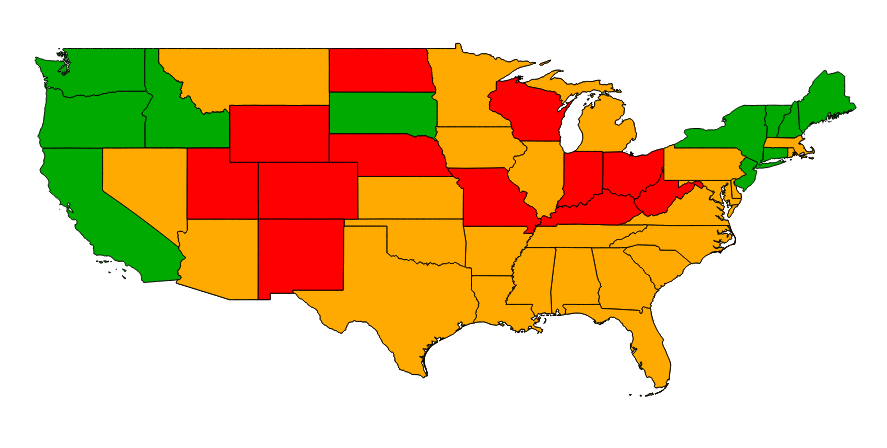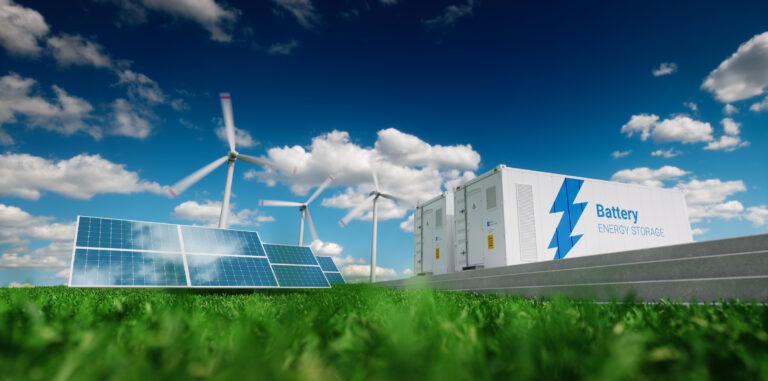A friend of mine recently told me his wife signed up to be on the waiting list for the new Tesla SUV. He said she wants to drive a car with less of an environmental impact, and that got me thinking about BTUs of course.
So I went to the Tesla website to look at the SUV, and, I admit, it looks cool. One item I noticed was the tag line for the Tesla Model S is “Zero Emissions Zero Compromises.” While I see the vision here, that isn’t quite the case yet – regardless of the state where you live. Every state currently has some emissions as a result of electricity generation.
So here is a brief breakdown for all you Tesla drivers out there. This is all done using Energy Information Administration (EIA) electric generation data by fuel type and by state. Assumptions have been made for the sake of this ‘back of the envelope’ analysis – including all electricity generated in a state is consumed in a given state, which of course is not the case but gives a relative approximation for this piece.
The EIA data has the following electric generation sources: coal, natural gas, hydro, geothermal, nuke, fuel oil, solar, wind, wood and other.
I created a method to rank states in three categories based on a points system for each generation type’s emissions. Points were assigned as follows:
– Coal and fuel oil – 1 point
– Natural gas, wood and other – 2 points
– Nuke, hydro, geothermal, solar and wind – 3 points
I then used a volume-weighted calculation based on the points system above against each state’s generation composition. The state with the greatest number of points is where emissions-minded Tesla drivers should be happiest. Conversely, the state with the fewest points is where Tesla drivers who like to burn coal should be happiest.
So if you were charging your Tesla in June 2014, here are the results according to BTU Analytics:
Top Five Ranked States for Low Electricity Emissions: Vermont, Washington, Idaho, Oregon and New Hampshire (sorry California you ranked 8th and we all know you cheat by making Arizona and Nevada burn lots of coal for you). How does Vermont get this esteemed position – 73% nuke, 17% hydro, 6% wood, 3% wind, 1% solar with no coal, gas or fuel oil generation.
Top Five Ranked States for High Electricity Emissions: West Virginia, Kentucky, Indiana, Wyoming and Missouri. West Virginia takes the prize with 97% coal, 1% hydro, 1% gas and 1% wind generation.
The map below shows the lower 48 in the three categories where low emissions is green, medium emissions is yellow, and high emissions is red (and no, this is not a presidential election map from CNN).
 Here is how all 50 states ranked from lowest emissions to highest emissions:
Here is how all 50 states ranked from lowest emissions to highest emissions:
Vermont, Washington, Idaho, Oregon, New Hampshire, Connecticut, New York, California, South Dakota, New Jersey, Maine, Montana, Massachusetts, South Carolina, Illinois, Virginia, Alaska, Arizona, Rhode Island, Maryland, Pennsylvania, Nevada, Alabama, Mississippi, Louisiana, North Carolina, Delaware, Minnesota, Florida, Texas, Tennessee, Georgia, Michigan, Kansas, Oklahoma, Arkansas, Iowa, Nebraska, Colorado, Wisconsin, North Dakota, New Mexico, Ohio, Hawaii, Utah, Missouri, Wyoming, Indiana, Kentucky and West Virginia
In the ‘for-what-it-is-worth’ category below, the top three states by a total percentage of electric generation by source are listed:
Top 3 Natural Gas: Rhode Island (98%), Delaware (86%) and Massachusetts (68%)
Top 3 Nuke: Vermont (73%), New Hampshire (57%) and Illinois (51%)
Top 3 Geothermal: Nevada (7%), California (6%) and Hawaii (3%)
Top 3 Wind: South Dakota (23%), Iowa (23%) and Oregon (21%)
Top 3 Hydro: Washington (80%), Idaho (75%), Oregon (70%)
Top 3 Solar: California (7%), Nevada (3%) and Arizona (3%)
Top 3 Wood: Maine (20%), New Hampshire (7%) and Vermont (6%)
Top 3 Fuel Oil: Hawaii (67%), Alaska (9%) and Louisiana (6%)
Top 3 Coal: West Virginia (97%), Kentucky (94%), Indiana (88%)
Back to my friend’s wife…seeing as we live in Colorado where 60% of our electric generation comes from coal, perhaps she may want to consider an Audi Q7 TDI with over 28 MPG – or she should move to Vermont.









